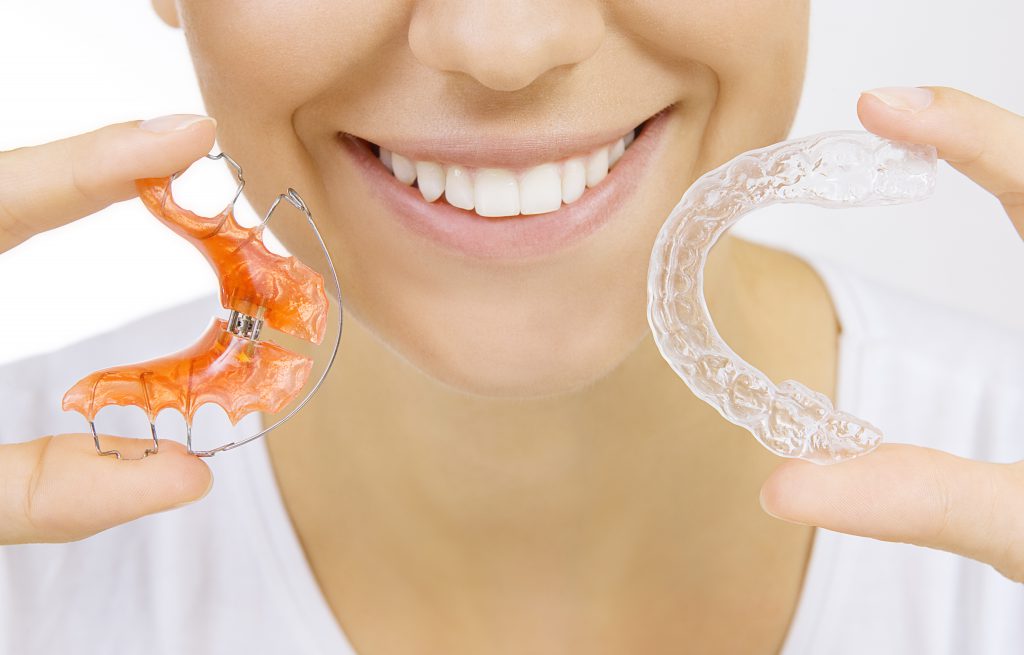The Importance of Retainers After Braces
The day you get your braces off is a huge day! You can finally eat all those foods that you haven’t been able to for months – maybe even years! However, don’t get so caught up in the excitement that you forget that your orthodontic treatment isn’t quite over.
People used to think that when their braces came off that their teeth would stay that straight forever. However, in the last twenty years or so, research has shown that there isn’t one right position to move teeth that will guarantee a permanent result. Typically as people get older, their teeth shift no matter what, whether they’ve had orthodontic treatment or not. So keeping up a new, straight smile is a long-term commitment that doesn’t end just because you’re not visiting us at Berkman and Shapiro every four to eight weeks!
To better understand this movement, let’s take a look at the two types of changes that occur after orthodontic treatment.
Post-treatment shifting
Usually when your treatment ends, your teeth will have a natural tendency to move back to their original positions before you started treatment. This tendency lessens over time, but it can be an issue for up to 18 months post-treatment.
There’s also another type of movement that is a much slower, longer lasting change that occurs over time. This is more than likely due to the gradual “uprighting” movement of the front teeth on the lower jaw. This occurs naturally with age, but this can cause teeth to crowd as they move closer to the tongue.
Undergoing orthodontic treatment will fix crooked teeth, but it won’t prevent these changes from occurring. The only guaranteed way to keep your teeth from shifting is by using a retainer to keep them in the right position.
What are retainers? How do they work?

A retainer is simply a plastic or metal appliance that keeps teeth aligned after a patient has completed orthodontic treatment with braces or Invisalign. These appliances are made from a mold taken when the treatment is finished, and they apply the pressure and guidance needed to keep teeth from drifting back to their original positions. By using retainers, the teeth are literally being “retained” in their new position.
When we create your orthodontic treatment plan, it includes the type of retainer you will use and the duration of time you’ll be recommended to wear it. There are several different types of commonly used retainers: most are able to be removed, but some are permanently fixed behind the teeth. They all share the goal of keeping your teeth as straight as they were when your braces came off, but they accomplish this in different ways. The appropriate retainer for you will be decided based on several factors, including your age and your particular treatment.
What are the types of retainers?

There are two main types of retainers that we recommend patients to wear:
Hawley retainers
These are the most commonly used retainers that you see people wearing. This type of retainer consists of an acrylic piece that is molded to lay against the top of the mouth with a wire that fits around the outside of the teeth to keep them in place.
Essix retainers
These retainers have a similar look and design to Invisalign aligners. Essix retainers are meant to just fit over all the teeth, and since they are completely clear, they aren’t as noticeable as Hawley retainers.
Will I have to wear my retainer forever?
Well, there are many different factors that determine how long you will have to wear your retainer. Now, that doesn’t mean that you have to wear it 24/7, but for the first three to six months after finishing treatment, most orthodontists recommend that you do wear your retainer all the time, save for brushing your teeth and eating. Soon, your teeth will have started to stabilize in their new positions, and at that point, you’ll only have to wear your retainer at night. It’s recommended that you wear your retainer like this for 1-3 years to prevent your teeth from having an orthodontic relapse. You’re probably not going to have to wear your retainer forever, but the majority of orthodontists recommend that you continue to wear your retainer to bed at least 2-3 times a week indefinitely.
So what happens if I don’t wear my retainer?
Retainers are designed to keep your teeth in place, choosing to not wear it for a long period of time will cause some issues. It’s fine to miss a day or two because your teeth won’t move much during that time. If you go without it much longer than that, then your teeth will start to shift again. A lot of patients are diligent about wearing their retainer as recommended for a few years, but as they get older, they wear it less and less until they aren’t wearing it at all anymore. This can result in noticeably shifted teeth over time.
What if my retainer doesn’t fit anymore?
If you haven’t worn your retainer in a long time, your teeth may have shifted so much that you find your retainer doesn’t fit anymore! If it’s only a slight misalignment, you can sometimes get your retainer in place even if it’s a tight fit. Wearing a retainer that’s only slightly ill-fitting can move your teeth back into their designated position over time. However, if there’s no way you’re getting your retainer over your teeth, you can cause damage to your teeth by using force to try and get it to fit. If you find that yours won’t go onto your teeth without a lot of force, get in touch with us to get you fitted for a new retainer.
Pretty much every patient will see a shift in their teeth when they finish their orthodontic treatment, but wearing your retainer is your best defense against this! If you are in the Commerce Township area and are looking for more information on post-orthodontic treatment with retainers, or need to be fitted with a new one, we at Berkman and Shapiro can take care of you! Get in touch with us to schedule an appointment, or call us at 248.360.7878.





